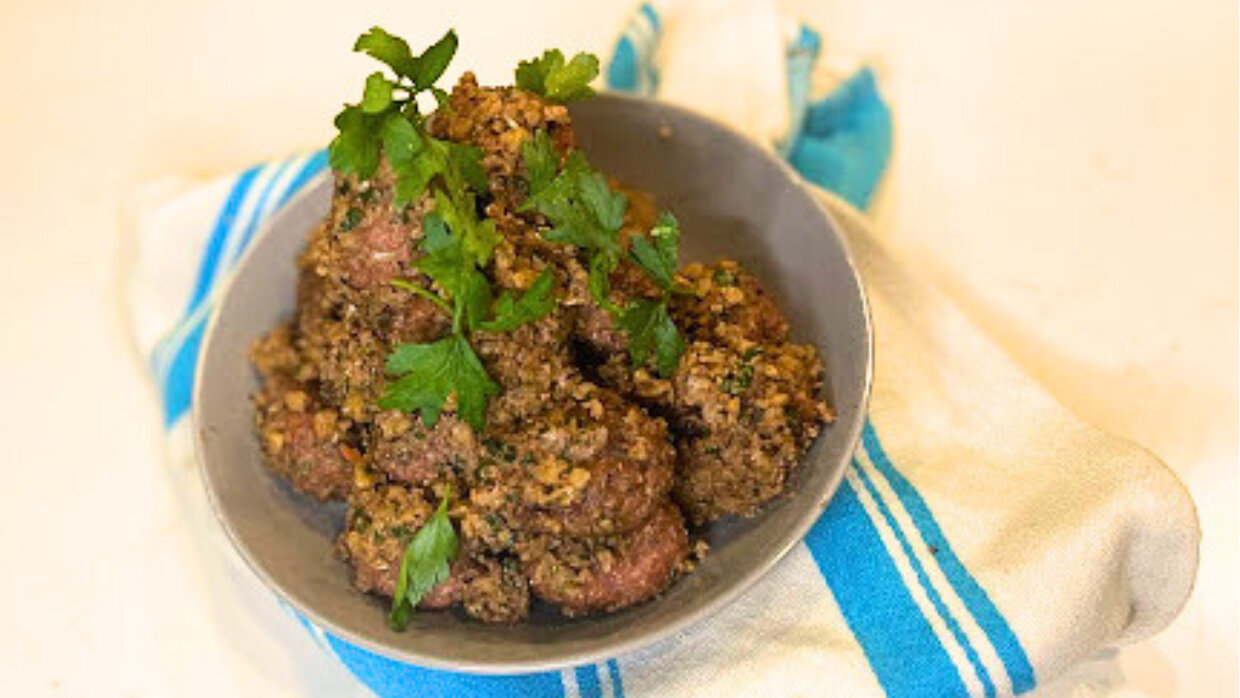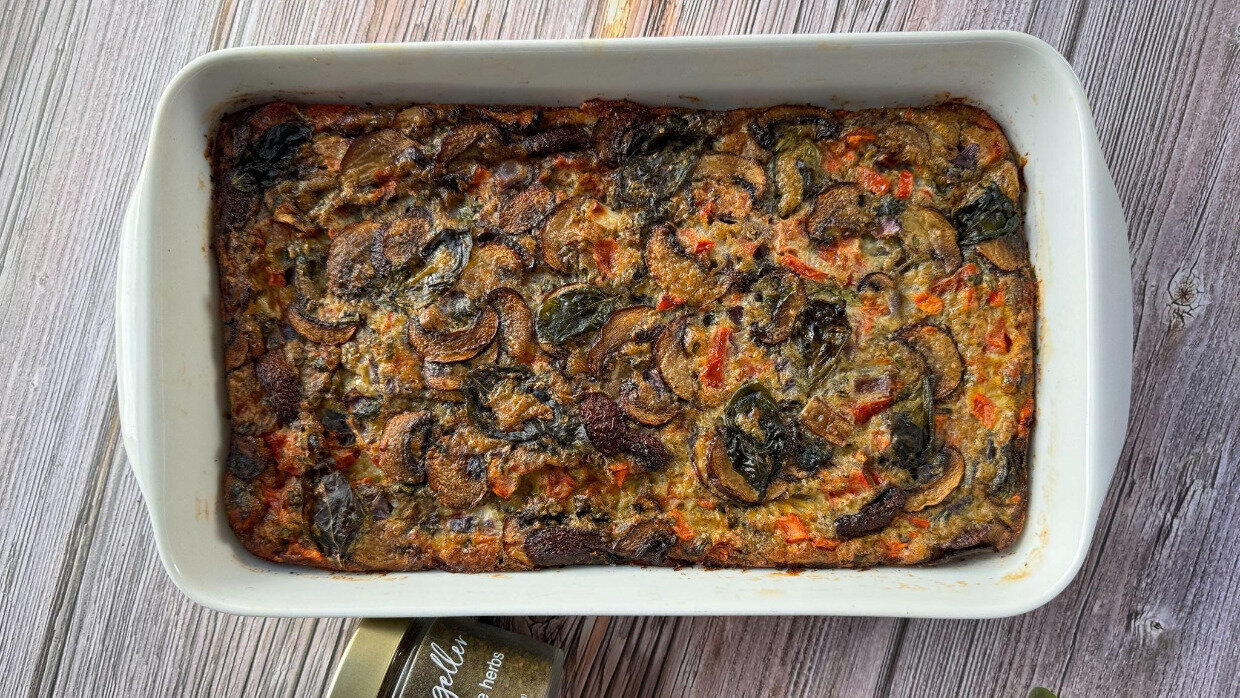Kefitkes De Nogáda Con Muési Prishil, the official Greek name of this dish are basically meatballs, which are popular in all Sephardi cuisine. These are covered in a mixture of walnuts and parsley for a uniquely delicious flavor profile. It is not a very saucy preparation but it works well over couscous with broth.
Ingredients
Servings 7
- 1 pound ground beef
- 2 slices bread crust removed
- 1 small onion finely grated
- 1 egg
- 1 tablespoon oil
- Salt and pepper
- Oil for frying
- 1 ¾ cups finely chopped walnuts
- 2 tablespoons dry breadcrumbs
- 2 cloves garlic minced
- Juice from a lemon
- Handful parsley finely chopped
Nutritional Facts
Nutrition Facts
Keftikés, Greek Meatballs with Walnuts and Parsley
Amount per Serving
Calories
494
% Daily Value*
Fat
43
g
66
%
Saturated Fat
8
g
50
%
Trans Fat
1
g
Polyunsaturated Fat
17
g
Monounsaturated Fat
15
g
Cholesterol
69
mg
23
%
Sodium
279
mg
12
%
Potassium
359
mg
10
%
Carbohydrates
12
g
4
%
Fiber
3
g
13
%
Sugar
2
g
2
%
Protein
18
g
36
%
Vitamin A
88
IU
2
%
Vitamin C
3
mg
4
%
Calcium
65
mg
7
%
Iron
3
mg
17
%
* Percent Daily Values are based on a 2000 calorie diet.
Instructions
- In a large bowl add ground beef. Soak bread, wring out and add to meat. Add onion, egg, oil, salt and pepper and mix well but with a gentle touch.
- Heat a generous amount of oil over medium to high heat in a large frying pan. Shape the meat mixture into balls and fry them in the oil, turning as they cook so they brown evenly all over.
- When the meatballs have been thoroughly browned, pour off some of the excess frying oil, if any remains, leaving a thin layer in the pan. If the pan is dry, add oil until you have a nice coating. Add 1/2 cup water, chopped walnuts and the dry breadcrumbs. Simmer gently until you have a thick sauce, add lemon juice and more water if necessary. When everything is hot it is ready to serve.
















Sorry wrong again. These are not Greek at all, but from Spanish and Portuguese Jews who migrated to Greece and Turkey. In fact many of the areas in Greece that serve these foods were once part of the Ottoman Empire and not Greece. I am a very proud Spanish and Portuguese Jewess and my family has been making many of these "Greek" delicacies for generations and the names are LADINO not Greek.
Why is there no mention of the Greek Jews from Ioannina. Were they not there before the migration from Spain, Portugal, Germany and Russia?